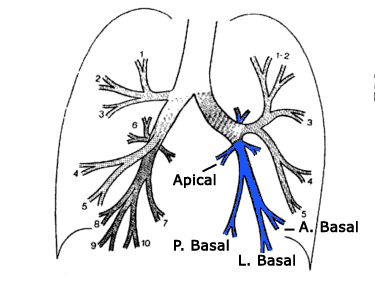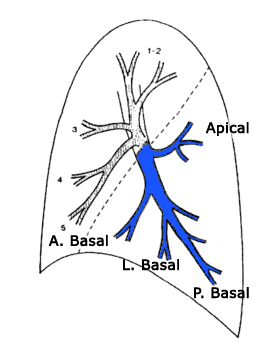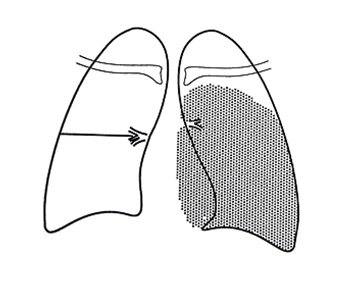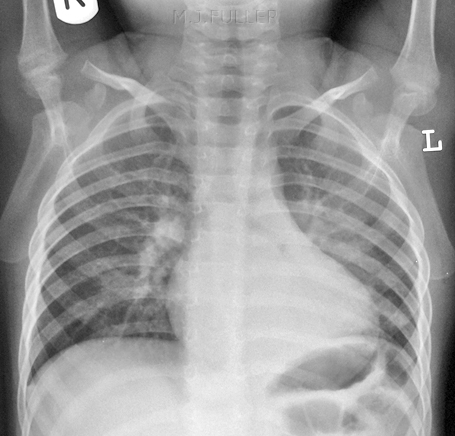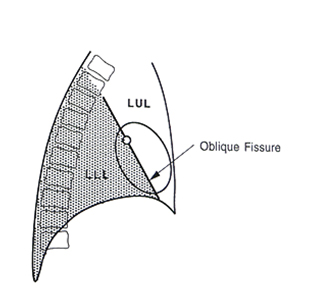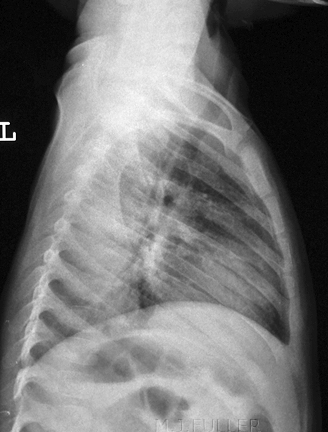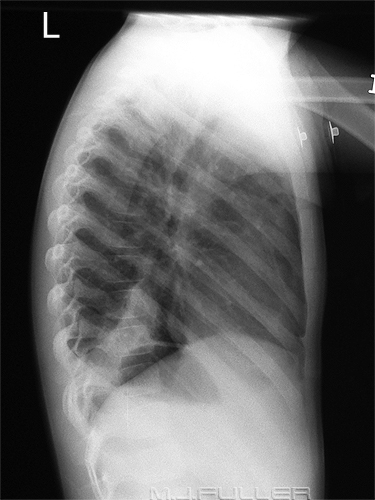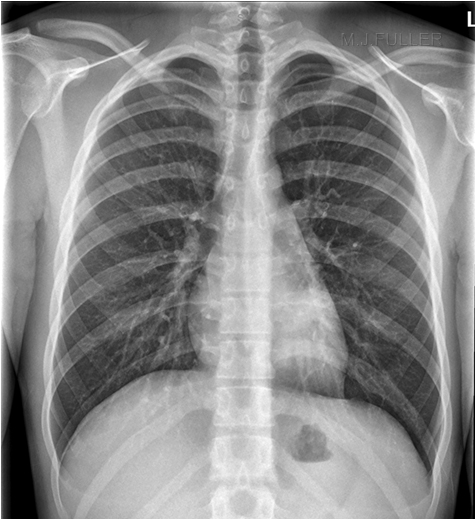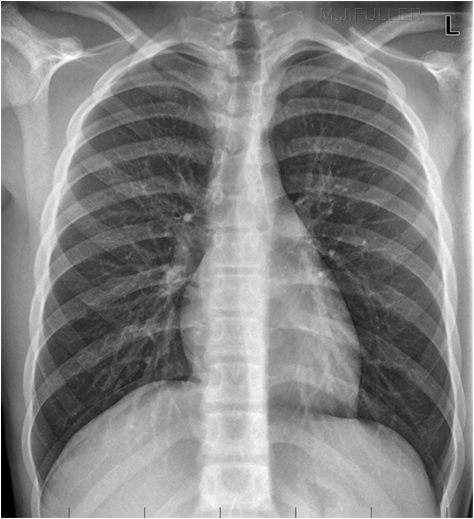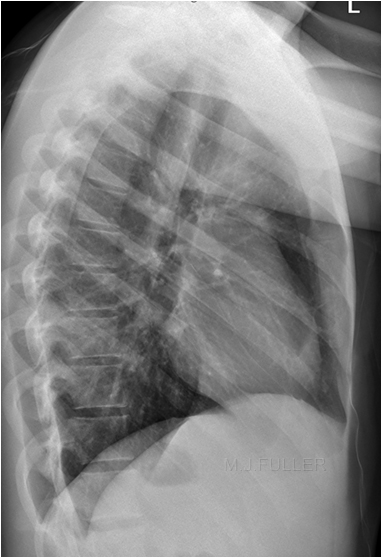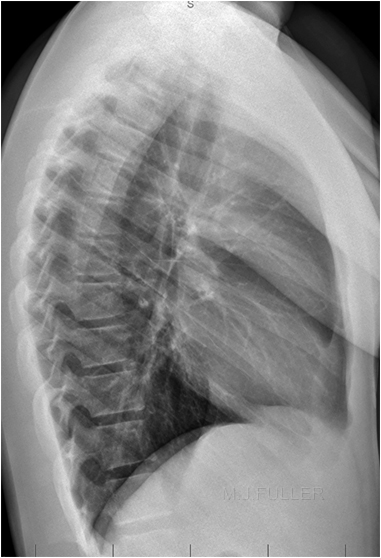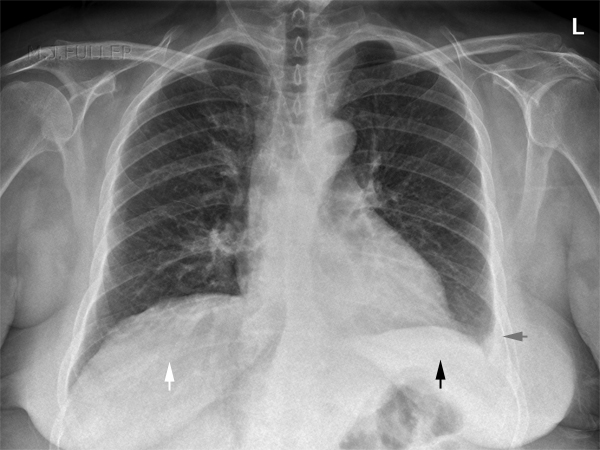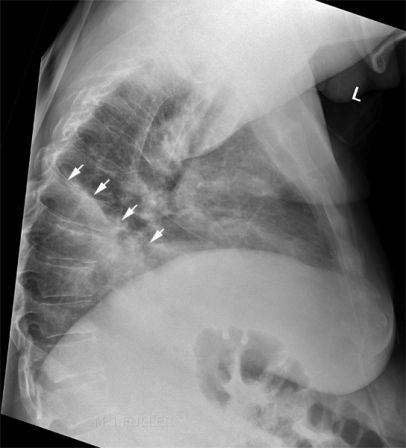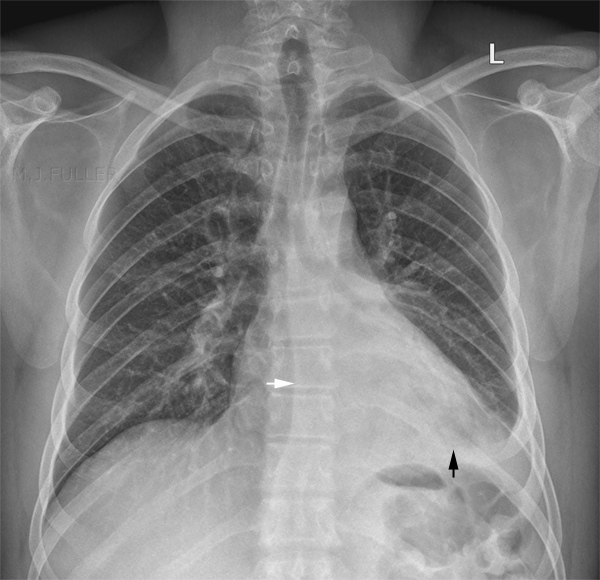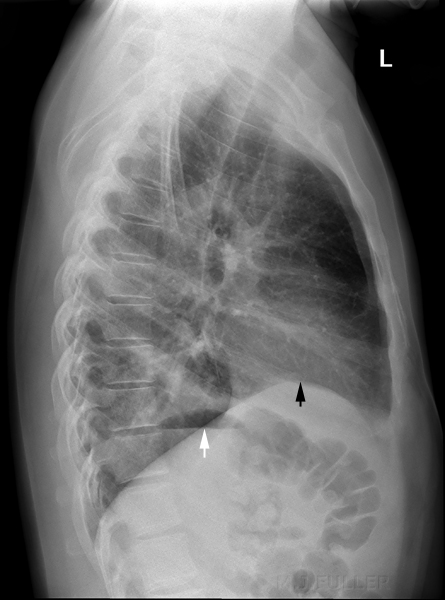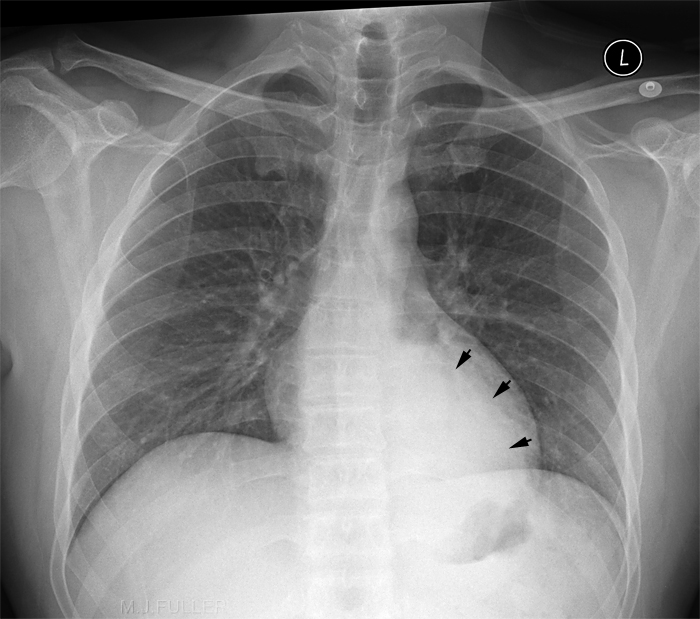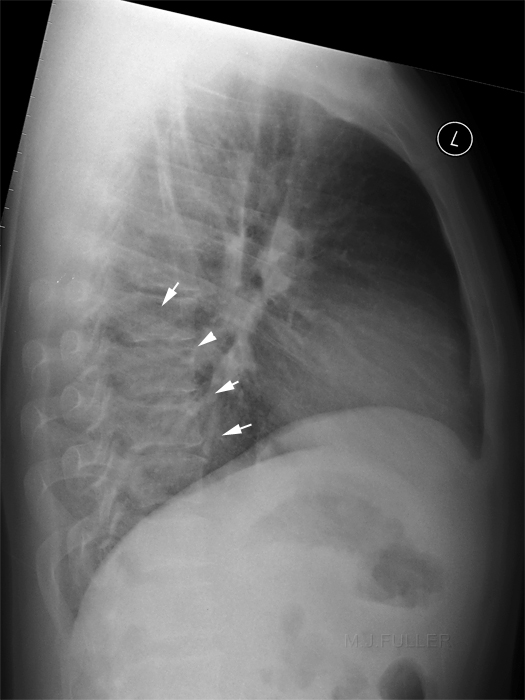Left Lower Lobe Consolidation
Introduction
Left Lower lobe (LLL) is a relatively common site for consolidation and can be a tricky diagnosis if the image is underpenetrated and/or if the consolidation is not very dense and/or if a lateral view is not included in the series.
The Meaning of the Term Consolidation
One of the unfortunate aspects of the term consolidation is that its meaning can be different depending on who is using the term. When a clinician uses the term consolidation he/she is usually referring to a consolidation associated with acute pneumonia. Thus, the term consolidation and pneumonia have very similar meanings and are almost used interchangeably.
Strictly speaking, the term consolidation does not imply any particular aetiology or pathology. Acute pneumonia is the commonest cause but not the only cause of consolidation. ( other causes include chronic pneumonia, pulmonary oedema and neoplasm). Thus when a radiologist has reported a chest X-ray examination and notes the presence of consolidation he/she is simply stating that some of the long airspace has been replaced by a fluid.
The Left Lower Lobe Anatomy
adapted from <a class="external" href="http://books.google.com.au/books?id=Bif0zpmEWtAC" rel="nofollow" target="_blank">By Fred W. Wright Radiology of the Chest and Related Conditions: Together with an Extensive Illustrative Collection of Radiographs CRC Press, 2002</a>The left lower lobe is similar in structure to the right lower lobe except that it has two segments combined- because the anterior and medial basal segments share a common bronchial supply, these two segments are characteristically combined, forming an anterior medial basal segment. More information on lung anatomy here
adapted from <a class="external" href="http://books.google.com.au/books?id=Bif0zpmEWtAC" rel="nofollow" target="_blank">By Fred W. Wright Radiology of the Chest and Related Conditions: Together with an Extensive Illustrative Collection of Radiographs CRC Press, 2002</a>
Notes on Consolidation
- Consolidation refers to fluid in the airspaces of the lung
- Consolidation may be complete or incomplete
- The distribution of the consolidation can vary widely. A consolidation could be described as “patchy”, “homogenous”, or generalised”.
- A consolidation may be described as focal or by the lobe or segment of lobe affected
Plain Film Appearances of Lung Consolidation
Radiological appearances common to all lobes are:
1.Abnormal lung opacity2.Increase in the size and number of lung markings3.Loss of clarity of the diaphragm on the AP and/or lateral views4.Loss of clarity of the heart border on the AP and/or lateral views5.Air bronchogram lines6.Loss of the normal darkening inferiorly of the thoracic vertebral bodies on the lateral view7.Opacification of the lung behind the heart shadow or below the diaphragms
Look Behind the Heart Shadow
One of the more subtle appearances of consolidation can be seen when the left heart shadow appears abnormally dense. Benjamin Felson (<a class="external" href="http://www.amazon.com/Chest-Roentgenology-Benjamin-Felson/dp/0721635911/ref=sr_1_2?ie=UTF8&s=books&qid=1252240078&sr=1-2" rel="nofollow" target="_blank">Chest Roentgenology, W.B. Saunders, 1973, p23</a>) notes that "... the cardiac thickness is approximately the same on both sides of the spine; thus the heart normally casts a uniform roentgen shadow over its entire area".
Obliteration of the Descending Aorta"The descending aorta indents the superior and posterior basal segments of the LLL, and its lateral margin is therefore obliterated by lesions in these segments". Benjamin Felson (<a class="external" href="http://www.amazon.com/Chest-Roentgenology-Benjamin-Felson/dp/0721635911/ref=sr_1_2?ie=UTF8&s=books&qid=1252240078&sr=1-2" rel="nofollow" target="_blank">Chest Roentgenology, W.B. Saunders, 1973, p36</a>)
Single View Chest Radiography
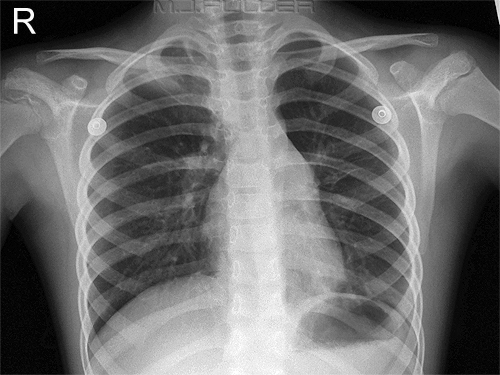
This is a PA/AP chest image on a paediatric patient. It may be tempting in a difficult patient to finish the examination at this point. The lung fields are well demonstrated and you can even see behind the heart and under both hemi-diaphragms. This is a lateral chest image on the same patient. Note the left lower lobe consolidation. In retrospect, there is increased opacity seen behind the heart on the AP view, but this could easily be missed.
Any single view radiography is hazardous, and the chest is no exception.
There is further discussion on the value of a lateral chest image here.
Subtle LLL Consolidation
Case 1
Case 2
Case 3
...back to the Applied Radiography home page
